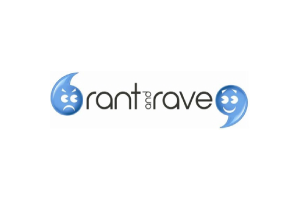Safeguard your brand in the UK
Trade Mark Most Asked Questions
Straightforward, fairly priced trade mark registration
Packages & Cost
Our packages for those who wish to protect their brands in the UK.
The Process
To register a trade mark across the entire European Union, the most efficient method is to file a European Union Trade mark (EUTM) application. This application covers all 27 EU Member States. The registration process typically takes about 4-5 months, so long as there are no objections.
The EUTM provides protection in every EU member state. A single similar trademark in any member state can lead to the rejection or cancellation of your application.
If accepted your ™ is registered for 10 years

Trade Mark Ownership
Trade mark ownership refers to the legal right to exclusively use a distinctive mark, logo, name, or symbol to identify goods or services and distinguish them from those offered by others. This ownership grants the trade mark holder the authority to prevent unauthorised use of the mark that could lead to consumer confusion or dilution of the brand’s identity.
By securing trade mark ownership, businesses safeguard their brand’s reputation, ensuring that consumers can reliably identify and differentiate their products or services in the marketplace. To help clarify these issues, we have compiled a list of frequently asked questions about trade mark ownership.
No, you don’t need to have a company to register your trade mark.
For most entrepreneurs, it is advisable to have their company be the owner of the trade mark, but there are cases where individual ownership might be preferable. For example, a business owner might want to secure intellectual property rights while setting up a new company. Or, an individual (e.g., a celebrity) might wish to retain ownership rights and licence the use of the trade mark to a different company.
For individually owned trade marks, it’s common to draw up a licence agreement between the owner and the user, even if it’s your company. Another option might be transferring the trade mark ownership to the company once it’s set up.
Yes, a trade mark can have multiple owners; however, there are caveats to trade mark co-ownership.
Joint ownership of a trade mark is not preferred by intellectual property offices. The fundamental purpose of a trade mark is to inform consumers about a single source of goods and services, which can be ambiguous with multiple owners.
If multiple parties wish to co-own a trade mark, they must create a legal contract indicating joint ownership. Each party should also have some control over the nature and quality of the goods and services. Unless specifically stated in the contract, the ownership of the trade mark is equally shared.
One option for multiple trade mark owners is to form a new legal entity specifically for the purpose of owning the trade mark.
By default, and unless otherwise specified, the rights and responsibilities are shared equally within joint trade mark ownership.
The applicant’s primary responsibility is to provide valid details on the application. They are legally responsible for keeping the details of a trade mark application/registration up to date and notifying the IP office of any changes during the period in which the trade mark is active.
Generally, it is advisable to tie the ownership of a trade mark to the entity that will be using it in commerce. This often means applying for a trade mark in the name of a business entity. This choice also simplifies trade mark ownership transfers later.
There are specific cases where registering a trade mark as an individual might be preferable. For example, due to the length of the registration process, budding entrepreneurs might want to file a trade mark in advance while setting up their company.
Consider whether the trade mark owner should be a physical person or a legal entity. This decision should be based on who will be using the trade mark.
The owner of the trade mark is allowed to assign the trade mark, authorise the licence, or enforce their rights in case of infringement. Therefore, base the ownership decision on your vision for using the trade mark.
If you plan to sell products as a company, an LLC owner might be the right choice. Choosing a company as the owner can secure rights to the trade mark in case of structural changes in the company. On the other hand, if you seek protection over a family brand, a sole proprietorship might be more suitable.
To file with an LLC as the owner, your company must already exist before filing.
Yes, trade mark holder information is public, and trade mark registries can be accessed by anyone who wishes to obtain more information about trade marks and their respective holders.
Every country has a dedicated IP office website that includes a trade mark registry. Information about the owner of any trade mark can be retrieved using an application/registration number or the name of a brand/product. The trade mark holder information includes the type of trade mark holder (a physical person or a legal entity), the official address of the entity, and the legal representative of the trade mark.
If a person does not agree to provide their official address, they can use a PO Box instead in the UK. The United Kingdom Intellectual Property Office (UKIPO) permits the use of a PO Box address, but it may require a physical address for certain communications or legal documents, this applies to the EUIPO, IP Australia and the Canadian IPO. However, the USPTO prohibits using a PO Box address instead of an official address of an individual applicant for a trade mark.
If you file your trade mark application through a representative, you (or your company) will still be the owner. Your trade mark will list you as the owner and the agent, such as National Business Register as a representative.
You are not bound to only use the services of the said representative. If you wish, you can change representation during or after the proceedings.
Yes, you can register a trade mark as an individual person. If needed, it can be later transferred or assigned to the company (or vice versa).
Why Trade Mark?

What our clients have said








Book your FREE consultation session
Need some advice? Got some burning questions that you want answering?
It only takes two minutes



